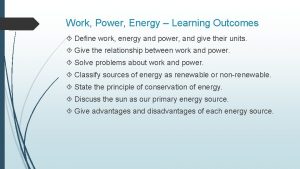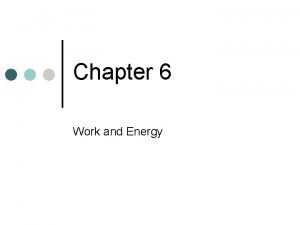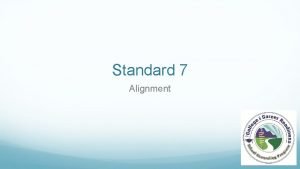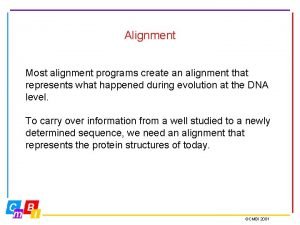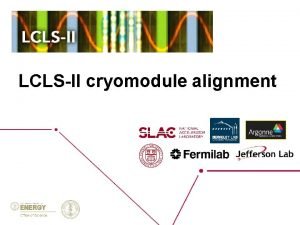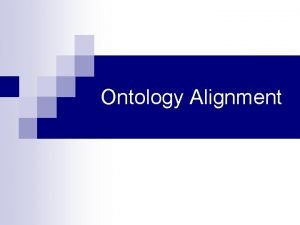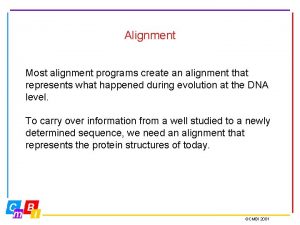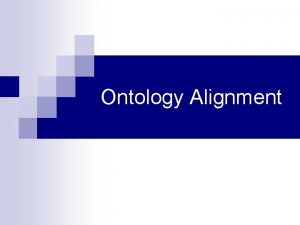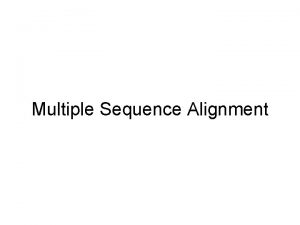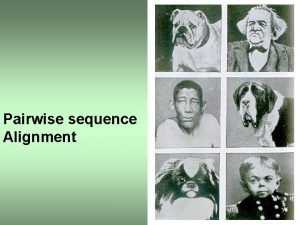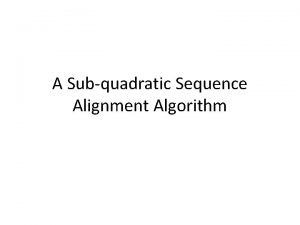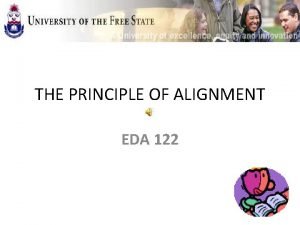Learning Outcomes Learning outcomes and Alignment S A











- Slides: 11

Learning Outcomes

Learning outcomes and Alignment S. A. Cohen (1987) coined the term instructional alignment, that refers to the degree to which intended outcomes, instructional processes and instructional assessment match with efforts to produce the outcomes.

Alignment Improves Student Learning Cohen found that learning can often be improved by as much as two standard deviations by aligning the objectives with teaching and evaluation. Profound positive effects were especially seen in under prepared students.

What are learning outcomes? Learning outcomes are specific statements of what learners will be able to do (action verb) under what conditions (by the end of the course).

Why are learning outcomes important? Learning out comes v Tell students what they should be able to do at the end of the course v Are the basis for delivery of content, activities, assessments… every thing. v Guide the planning of activities and assessments that enable these outcomes to be accomplished.

How are learning outcomes written? Learning outcomes are written in language to demonstrate that students achieve higher order levels of thinking (Bloom’s taxonomy) Remember Define, list, describe, label, state Understand Classify, describe, discuss, explain, identify, locate, recognize, report, select, translate, paraphrase Apply Choose, demonstrate, dramatize, employ, illustrate, interpret, operate, schedule, sketch, solve, use, write. Analyze Appraise, compare, contrast, criticize, differentiate, discriminate, distinguish, examine, experiment, question, test Evaluate Appraise, argue, defend, judge, select, support, value, evaluate Create Assemble, construct, create, design, develop, formulate, write

Learning outcomes help students l Know what to expect l Understand what the course requires l Recognize what they will be able to do at the end

Learning outcomes help instructors l Organize the course l Plan activities and assignments l Plan assessments To achieve the desired outcomes.

Example Learning Outcomes and Assessment Methods for Business and Professional Speaking class Learning Outcomes of this course Assessment Methods Students will be able to: As measured by: Explain the importance of communicating effectively in business and professional contexts Written in-class examinations, course assignments, class participation, and formal presentations. Work effectively in teams to research a Reflection on teams self and peer topic and develop it into a technical evaluation, technical presentation, presentation. outline, bibliography. Work effectively in groups to research a topic and develop it into a proposal presentation. Reflection on teams and groups self and peer evaluation, proposal presentation, proposal portfolio, outline, bibliography.

A model of course design (Adopted from Fink, 2003) Learning Goals Feedback and Assessment Teaching and Learning Activities

Work Cited Cohen, S. A. (1987). Instructional alignment: Searching for a magic bullet. Educational Researcher, 16 -20. Fink, L. D (2003). Creating significant Learning experiences: An integrated approach to designing college courses. San Francisco: Jossey – Bass. Anderson, L. W. & Krathwohl, D. R. (2001). A taxonomy for learning, teaching, and assessing: A revision of Bloom’s taxonomy of eductional objectives. New York: Longman
 Gcg bioinformatics
Gcg bioinformatics Compare two sequences
Compare two sequences Pam1250
Pam1250 Sequence alignment
Sequence alignment Global alignment vs local alignment
Global alignment vs local alignment Example of learning objectives
Example of learning objectives Direct and indirect speech objectives
Direct and indirect speech objectives Output devices purpose
Output devices purpose Sound energy definition
Sound energy definition Learning outcomes of profit and loss
Learning outcomes of profit and loss Learning outcomes of work and energy
Learning outcomes of work and energy Learning outcomes of ascending and descending order
Learning outcomes of ascending and descending order








